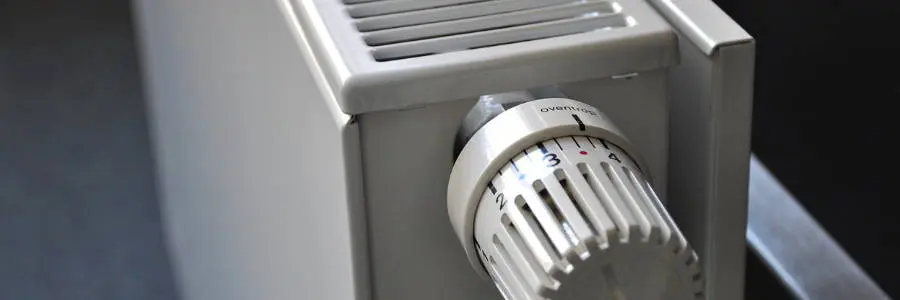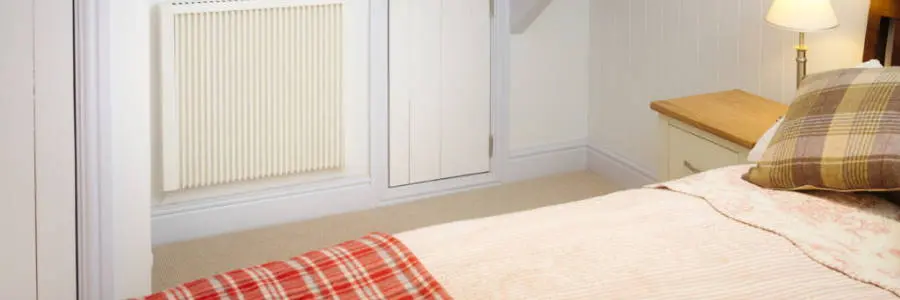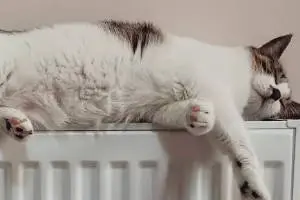Struggling with how to choose a radiator? We’ve got you covered; this guide includes everything you need to know so you can make the right decision for your home.
Choosing radiators can often be an afterthought or a decision purely based on aesthetics. But, picking the right radiator is important. Not only will you make sure your home is heated properly and feels comfortable, it could help to significantly reduce your energy bills. Because although radiators are all designed to heat a room, like any home appliance, some designs inevitably work better than others.
The following guide on how to choose a radiator will answer all of your key questions, including things like
- Which heating method should be used?
- Which type of radiator is best for your home?
- What size should the radiator be?
- What material should radiators be made from?
- Who should install a new radiator?
By the end of this guide, you should have a much clearer idea of the type of heating system that’s right for your home.
Radiator heating styles
The most important question is how will your radiator/s be heated? Radiators in the UK are usually heated in one of three ways, detailed below.
Central heating radiators
Also known as “wet systems”, the most common type of radiator in the UK is gas central heating. These radiators are metal units which are connected to your home’s boiler via mains plumbing (pipes that are usually installed under the floor of your home). When the central heating system is turned on, the boiler sends hot water to the radiator via these pipes, which subsequently warms the room as heat is released from the radiator unit.
Boilers in gas central heating systems need regular maintenance, and depending on the manufacturers or installers guarantee period, will need replacing after a certain amount of years This can be expensive.
Radiators in gas central heating systems also need maintenance, such as bleeding (releasing air that has become trapped inside the radiator, causing uneven surface heat disribution). If you can hear banging or gurgling pipes, this is usually a sign your radiators need bleeding.
Temperature is controlled by a single thermostat placed somewhere in the property (usually a hallway or similar). Although you can set the individual temperature of wet radiator units via twisting a knob usually situated on the bottom corner, this doesn’t affect the energy consumption of the boiler which is controlled by the main thermostat.
As gas is also a non-renewable energy source, the government has announced that by 2025, all new homes will be banned from installing gas and oil boilers and will instead be heated by low-carbon alternatives.
Electric radiators
An electric radiator is a self-contained unit that uses an internal electrical element which is either embedded into a ceramic core, or thermo fluid. As the solid or liquid core warms, heat is released. Electric radiators don’t need a plumbing system. Instead, they’re powered by mains electricity, or by plugging it diectly into a socket. Whilst these radiators are most often wall mounted, like wet systems, unlike wet systems they can be easily retrofitted, moved, or kept permanently porable.
There’s a wide range of variables when it comes to electric radiators. Just like any electrical appliance, the design affects the performance and how effective the product is. So do other elements such as the killowattage, input and output (how much energy is consumed by the unit and how much is expelled as heat – contrary to popular myth, this is often not an equal number and must always be checked with the manufacturer), what material the unit is filled with, what mateials the unit is made from (anything from plastic to high grade powder coated steel) and if it distributes heat using a fan, or via natural convection.
Each individual unit has its own thermostat, which means closer temperature control. And more control over the amount of energy you use. Especially if the thermostat on the unit ceases to draw power once the room has reached the desired temperature.
Night storage heaters operate slightly differently, drawing power overnight then releasing heat during the day. Night storage heaters are most often used in conjunction with an Economy 7 tariff, where electricity drawn at night is charged at a cheaper rate. However, although nightime electricity rates are good value, Economy 7 consumers often find they’re charged far more than an average competitive tarrif for their daytime rates, making them unsuitable for some.
Although most electric radiators are connected to a home’s main electricity supply which runs from the national grid, they can also operate in conjunction with solar panels, or other forms of renewable energy sources.
Dual fuel radiators
A dual fuel radiator is essentially a hybrid that is most commonly a central heating radiator that has an additional electric element. This provides a ‘summer heating’ capability that is often used for bathroom radiators. Once a rare feature, they have become increasingly common in recent times.
All three radiator styles are available in various designs. Knowing the situation regarding your boiler and existing plumbing features will help guide you to the right decision.

Radiator materials and sizes
Picking the right size and killowattage of the radiator for the room, as well as positioning it in the correct place, will affect energy usage – as well as how effectively heat is distributed.
When choosing a radiator, you need to consider:
- Volume of the room (length, width and height)
- Size and positioning of the windows
- The type of insultion the property has
- The material the property is built from
- Interior design plans
Some radiator manufacturers have limited size options. This is seen most often with electric radiators, however, higher quality manufacturers will offer bigger ranges of size and kilowattage, as well as colour and orientation (landscape and portrait) options.
There are a huge range of varying designs for wet systems, however, these are often based around aesthetics rather than performance.
As for the material choice, materials vary depending on which heating system you choose.
Materials include but are not limited to;
- Cast iron – once the most common material of radiator, not seen very often now but still available.
- Mild steel – a very affordable option that offers a wide range of aesthetic options, including painting various colours. However, it can rust if you fail to look after the product correctly.
- Stainless, powder coated steel – stainless steel is a little more expensive but is robust and isn’t prone to rust. It’s also available in various designs.

Radiator installation
Once you’ve chosen the type of heating system and radiators, you also need to have it installed. A certified Gas Safe Engineer plumber, electrician or electrical heating engineer is the best solution. The experts can also provide a service that helps you select the right unit for each space, to make doubly sure you’re getting the perfect solution to meet your needs.
Some companies offer a complete turn key solution. From a free initial survey to determine the type or size of radiators available to suit the specific needs of you and your property, to installation of the system and aftercare. Make the most of what’s on offer from the experts and you’ll be sure to find the right radiator for your home.


